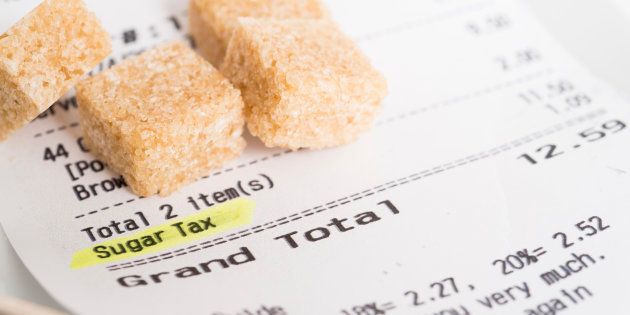
If you are to correctly treat an illness or a problem it is essential to ensure that a correct diagnosis is made before deciding on the treatment. The same process should also be undertaken when implementing policy decisions. Without conducting the proper background research into the nation's obesity problems, we too may be picking nothing but an ineffective scapegoat when it comes to health in South Africa.
A look back at how the tax was devised and determined shows how much of the process was based on a single piece of academic research which, it appears, overstated the effect of a sugar tax on obesity. What's more, it appears that the then Finance Minister rather arbitrarily came up with a tax percentage per gram of sugar, which was later reduced to a threshold of 4g during this year's budget speech.
Of course, it's easy to blame sugar for obesity -- and useful that it can double up as a way to bring in extra revenue for the government. There's no doubt that obesity is one of the country's biggest, most expensive health problems – including rocketing rates of heart disease and diabetes. But is targeting sugar sweetened beverages with a tax really going to solve the obesity problem?
The truth is we simply cannot really know because there hasn't been a total dietary intake study in South Africa to determine what most South African adults are actually eating in a day. The only national survey to date was the National Food Consumption Survey, undertaken in children aged one to nine years old back in 1999. There have been a few other isolated studies, but without the proper data, it is difficult to plan interventions and strategies to properly combat both malnutrition and obesity.
For instance, anecdotally it would appear that the biggest components of the average South African's diet include foodstuffs such as bread, mielie pap and possibly a cheap cut of meat such as chicken, sausage or polony. This is backed up by data - according to the Food and Agricultural Organisation of the United Nations, the largest contributors to the rise in energy intake have in fact been other calorie-rich foods such as vegetable oils, poultry and cereals.
In other words, people are eating more chicken, bread and porridge as part of their daily diets. During 1991-2011, while these categories of food dramatically increased and obesity rates climbed, sugar consumption actually declined. It is therefore not far-fetched to say that we might actually be getting our health policy interventions completely wrong, with potentially catastrophic implications further down the line. Without a baseline dietary intake study, we can't, for example, determine whether well-intended policies are actually misfiring and causing unintended consequences. A case in point is the introduction of compulsory food fortification in 2003.
South Africa has an added complexity in that we are dealing with both malnutrition and over-nutrition co-existing within the same population.
The regulations apply to any person or company that manufactures, imports, or sells maize meal and wheat flour, and foodstuffs which contain 90 percent of either maize meal or wheat flour such as bread. This fortification legislation required manufacturers to add certain vitamins and minerals to their products. In return, large millers were reimbursed and funded to the tune of millions of rand to upgrade their equipment and comply with the fortification legislation. In addition, no Value Added Tax (VAT) is paid on these foods. However, researchers have suggested that the artificially low prices of these fortified foods have led to overconsumption which is now driving the obesity epidemic.
A more nuanced solution would involve a mixture of interventions, including subsidies and public education. Instead of penalising consumers by taxing certain products of food, subsidising healthy foods could encourage more healthy purchasing and promote dietary behaviour. International Research found that an effective obesity strategy cannot be predicated on a single policy. McKinsey Global Institute found in 2014 that some 15 different interventions would be needed to reduce obesity rates by 10 percent. Moreover, they also found that the most effective interventions were things like portion control and increasing the availability of low-calorie options, whilst tax was in fact well down the list.
We should also be wary of implementing fiscal initiatives based on data from high-income countries. The priorities of low-income countries, as research points out, differ significantly from those of high-income countries. Poorer countries suffer from problems of malnutrition, rather than over-nutrition as is commonly observed in high-income countries. In South Africa's case, we have an added complexity in that we are dealing with both malnutrition and over-nutrition co-existing within the same population.
Blanket measures, such as introducing taxes on certain categories of food and beverages might, therefore, have beneficial effects on higher income groups, but simultaneously worsen the conditions for those less fortunate. The proposed tax on sugar-sweetened beverages, to the extent it has any health benefits, will help the rich in SA. The National Obesity Strategy rightly calls for more research to be done. So let's not put the cart before the horse, and the first aim to understand the root causes of obesity before hastily pushing through policies with limited impact and long-term consequences for all South Africans.
